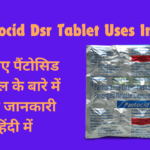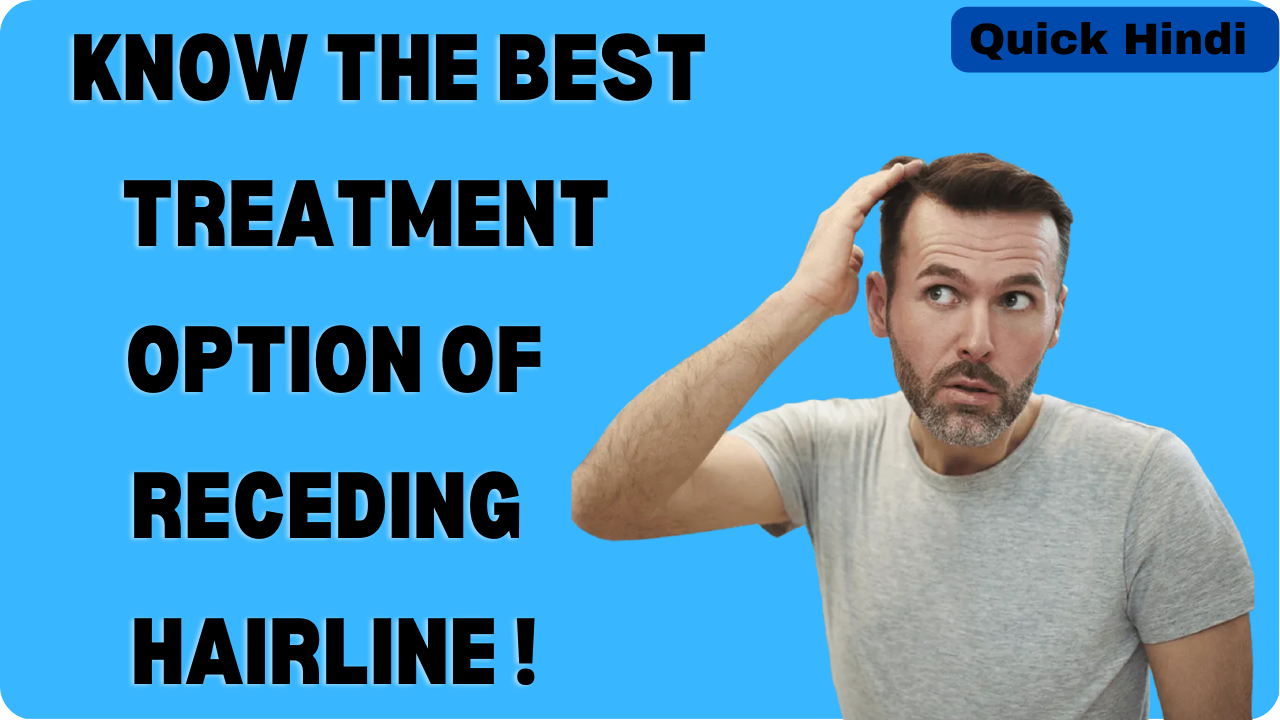Introduction
Hair loss is a common issue affecting both men and women of all ages. One of the most prevalent forms of hair loss in men is a receding hairline, which is characterized by the hairline gradually moving backward from its original position. This condition can be a source of distress for many men and may affect their self-confidence. However, understanding the causes, treatments and prevention methods can help individuals better manage their hair loss.
Causes of Receding Hairline
The most common cause of a receding hairline is androgenetic alopecia, which is a hereditary condition that affects over 50 million men in the United States alone. Androgenetic alopecia is caused by a combination of genetics, hormones and age. This condition leads to the shrinking of hair follicles, which eventually results in the hairline receding. Other causes of receding hairline include stress, poor nutrition, certain medications, autoimmune disorders, and certain hairstyles that put too much pressure on the hairline.
Read More : Best Gaming Mouse Under 2000 Rupees
Treatments for Receding Hairline
There are several treatments available for receding hairline, depending on the cause and severity of the condition. One of the most common treatments is the use of medication, such as finasteride and minoxidil, which can help to slow down or even reverse the hair loss process. However, these medications may have some side effects and should only be used under the guidance of a healthcare provider.
Another option for treating receding hairline is hair transplantation surgery, which involves transplanting hair from other parts of the scalp to the balding areas. This procedure can be costly, but it is a permanent solution that can provide a natural-looking hairline.
Prevention of Receding Hairline
While not all causes of receding hairline can be prevented, there are certain measures that individuals can take to reduce the risk of hair loss. These include maintaining a healthy diet that is rich in vitamins and minerals, avoiding hairstyles that put too much pressure on the hairline, managing stress levels, and avoiding smoking and excessive alcohol consumption.
In addition, using gentle hair care products and avoiding harsh chemicals or frequent use of heating tools can also help to prevent damage to the hairline. It is also important to seek prompt medical attention if hair loss is sudden or accompanied by other symptoms.
What are the symptoms of a receding hairline?
The main symptom of a receding hairline is the gradual loss of hair from the front of the scalp. This usually starts with a noticeable thinning of the hair at the temples and/or the crown of the head. As the hairline recedes, it may take on a distinct M shape, with the hairline forming a deep widow’s peak or a horseshoe-like pattern.
Other symptoms of a receding hairline may include
Thinning hair
The hair at the crown of the head may become thinner, which can also contribute to an overall loss of volume.
Visible scalp
As the hairline recedes, more of the scalp may become visible, especially when the hair is pulled back or styled in certain ways.
Itching or tingling
Some people may experience itching or tingling sensations on the scalp as the hairline recedes.
Changes in texture
Hair that is receding may become more brittle or dry, or it may change texture in other ways.
Excessive shedding
Some people with a receding hairline may notice that they shed more hair than usual, especially when brushing or washing their hair.
It is important to note that the severity of these symptoms can vary from person to person, and not everyone with a receding hairline will experience all of these symptoms. If you are concerned about hair loss, it is best to consult a healthcare professional or a dermatologist who can help determine the underlying cause and recommend appropriate treatments.
What Accelerates a Receding Hairline?
A receding hairline is a natural part of aging for many people, but there are several factors that can accelerate the process. These factors include:
Genetics
The most common cause of a receding hairline is androgenetic alopecia, which is a hereditary condition that causes hair follicles to shrink over time. If your family has a history of baldness or hair loss, you may be more likely to experience a receding hairline.
Hormones
Hormonal changes can also play a role in hair loss. Dihydrotestosterone (DHT), a hormone derived from testosterone, is known to contribute to hair loss by shrinking hair follicles. Some men may be more sensitive to DHT than others, which can lead to a receding hairline.
Stress
Chronic stress can also contribute to hair loss by disrupting the normal hair growth cycle. Stress can cause the hair to enter a resting phase, which can lead to more shedding and a receding hairline.
Nutritional deficiencies
A poor diet that lacks essential nutrients, such as vitamins and minerals, can also contribute to hair loss. Nutritional deficiencies can weaken hair follicles and make them more susceptible to damage and shedding.
Hairstyles
Certain hairstyles that put excessive tension or pressure on the hairline, such as tight braids or ponytails, can also accelerate hair loss. This type of hair loss is called traction alopecia.
Environmental factors
Exposure to pollutants, toxins, and other environmental factors can also contribute to hair loss. For example, exposure to UV radiation from the sun or harsh chemicals in hair care products can damage the hair follicles and contribute to hair loss.
It’s important to note that some of these factors may be beyond your control, such as genetics. However, adopting healthy lifestyle habits, such as eating a balanced diet, managing stress, and avoiding tight hairstyles or harsh hair care products, can help reduce the risk of accelerated hair loss and maintain a healthy head of hair.
The Best Receding Hairline Haircuts
A receding hairline can be a challenge to style, but with the right haircut, you can still look stylish and confident. Here are some of the best haircuts for a receding hairline:
The buzz cut
This is a very short haircut that can help minimize the appearance of a receding hairline. It’s also low-maintenance and easy to style.
The crew cut
This is a classic men’s haircut that features short hair on the sides and longer hair on top. The longer hair on top can be styled to cover the receding hairline.
The slicked-back undercut
This is a popular haircut that features short hair on the sides and back, and longer hair on top that is slicked back with a hair product. The longer hair on top can be styled to cover the receding hairline.
The side part
This is a timeless hairstyle that features a deep side part and longer hair on one side. The longer hair can be styled to cover the receding hairline.
The textured crop
This is a modern haircut that features short hair on the sides and back, and a textured, choppy top. The texture on top can help create the illusion of more hair and cover the receding hairline.
The French crop
This is a short, textured haircut that features a longer fringe in the front. The longer fringe can be styled to cover the receding hairline.
The bald head
If you’re ready to embrace your receding hairline, the bald head can be a stylish and confident look. This haircut is also very low-maintenance and can save you time and money on hair products.
It’s important to find a haircut that suits your face shape and hair type. Consult with a stylist who has experience working with receding hairlines to find the best haircut for you.
How to Stop Receding Hairlines
Stopping a receding hairline can be a challenging task, but there are some steps you can take to slow down or prevent further hair loss. Here are some tips on how to stop a receding hairline:
Maintain a healthy diet
Eating a balanced diet that is rich in nutrients can help keep your hair healthy and strong. Make sure to consume enough protein, iron, and vitamins B and D to promote hair growth.
Reduce stress
Chronic stress can contribute to hair loss, so finding ways to manage stress can be beneficial. Practice relaxation techniques like meditation or yoga, and make sure to get enough sleep each night.
Use hair care products wisely
Avoid using harsh hair care products, such as shampoos that contain sulfates or alcohol-based hair gels. Instead, opt for gentler, natural hair care products that are free of harmful chemicals.
Avoid tight hairstyles
Tight hairstyles that pull on the hairline, such as braids or ponytails, can cause traction alopecia and contribute to a receding hairline. Avoid these styles, or wear them loosely to reduce tension on the hairline.
Consider medication
There are several medications that can help slow down or stop hair loss, such as minoxidil and finasteride. Consult with a healthcare professional or a dermatologist to determine if these medications are right for you.
Treat underlying medical conditions
Some medical conditions, such as thyroid disorders or autoimmune diseases, can contribute to hair loss. Treating these conditions can help prevent further hair loss.
Hair transplant surgery
In severe cases of hair loss, hair transplant surgery can be an effective option. This procedure involves transplanting hair follicles from one part of the scalp to another to create a fuller, thicker hairline.
It’s important to note that not all hair loss can be prevented or stopped, and some cases may require a combination of different treatments. Consult with a healthcare professional or a dermatologist to determine the best approach for your specific case.
Receding Hairline Treatment Supplements
Supplements can be a helpful addition to a receding hairline treatment plan. Here are some supplements that may help promote hair growth and slow down hair loss:
Biotin
Biotin, also known as vitamin H, is a B vitamin that is essential for healthy hair, skin, and nails. It helps strengthen hair and prevent breakage, which can contribute to a receding hairline.
Zinc
Zinc is a mineral that is important for hair growth and repair. It helps keep the hair follicles healthy and promotes healthy hair growth.
Iron
Iron is a mineral that is essential for the formation of haemoglobin, which carries oxygen to the hair follicles. Low iron levels can contribute to hair loss, so supplementing with iron may help prevent a receding hairline.
Saw palmetto
Saw palmetto is a plant extract that is commonly used to treat hair loss. It works by blocking the conversion of testosterone to dihydrotestosterone (DHT), which is a hormone that can contribute to hair loss.
Niacin
Niacin, also known as vitamin B3, helps improve blood flow to the scalp and promotes healthy hair growth. It can also help reduce inflammation, which can contribute to hair loss.
Vitamin D
Vitamin D is important for hair growth and can help prevent hair loss. It helps regulate the growth and maintenance of hair follicles, and low levels of vitamin D have been linked to hair loss.
Omega-3 fatty acids
Omega-3 fatty acids, found in fish oil supplements, can help improve the health of hair follicles and promote healthy hair growth.
It’s important to note that supplements should not be used as a substitute for a healthy diet or medical treatment. Consult with a healthcare professional or a dermatologist before adding supplements to your receding hairline treatment plan, as some supplements may interact with medications or have side effects.
Receding Hairline Treatment Medication
There are several medications available that can be used to treat a receding hairline. Here are some commonly used medications for this purpose:
Minoxidil
Minoxidil is a topical medication that is applied directly to the scalp. It works by increasing blood flow to the hair follicles, which can promote hair growth and prevent further hair loss. Minoxidil is available over-the-counter and is generally considered safe for most people.
Finasteride
Finasteride is an oral medication that works by blocking the production of dihydrotestosterone (DHT), a hormone that can contribute to hair loss. It is only available by prescription and should be used under the supervision of a healthcare professional. Finasteride is not recommended for use in women who are pregnant or may become pregnant.
Dutasteride
Dutasteride is another oral medication that works by blocking the production of DHT. It is also only available by prescription and should be used under the supervision of a healthcare professional.
Corticosteroids
Corticosteroids are anti-inflammatory medications that can be used to treat conditions that cause hair loss, such as alopecia areata. They work by suppressing the immune system, which can reduce inflammation and promote hair growth.
Anthralin
Anthralin is a topical medication that is used to treat psoriasis and other skin conditions. It can also be used to promote hair growth, although the exact mechanism is not fully understood.
Spironolactone
Spironolactone is an oral medication that is commonly used to treat acne and high blood pressure. It can also be used to treat hair loss in women by blocking the effects of androgens, male hormones that can contribute to hair loss.
It’s important to note that medication should only be used under the supervision of a healthcare professional, as some medications may have side effects or interact with other medications. Additionally, not all medications may be suitable for every person, and a healthcare professional can help determine the best treatment approach for each individual.
Receding Hairline Treatment Surgical Techniques
There are several surgical techniques available for treating a receding hairline, including:
Hair transplant surgery
This involves taking hair from the back or sides of the head and transplanting it to the balding areas. There are two main methods of hair transplant surgery:
Follicular Unit Transplantation (FUT)
A strip of skin with hair follicles is removed from the donor area and divided into individual follicular units for transplantation.
Follicular Unit Extraction (FUE)
Individual follicular units are extracted from the donor area using a small punch tool and transplanted to the balding areas.
Scalp reduction surgery
This involves removing the balding area of the scalp and stretching the surrounding hair-bearing scalp to cover the area. The remaining scalp is then sutured together.
Scalp Micro pigmentation
This is a non-surgical treatment that involves tattooing the scalp with tiny dots to create the appearance of hair follicles.
Platelet-rich plasma (PRP) therapy
This involves injecting platelet-rich plasma from the patient’s own blood into the scalp to stimulate hair growth.
It’s important to note that not all of these techniques may be suitable for everyone, and the results may vary depending on factors such as the extent of hair loss, the quality of the donor hair, and the skill of the surgeon performing the procedure. It’s important to consult with a qualified and experienced hair transplant surgeon to determine the best course of treatment for your individual needs.
Receding Hairline FAQs
Sure, I can provide some FAQs about receding hairline:
Q1. What is a receding hairline?
A receding hairline is a condition in which the hair on the scalp starts to thin and recede from the forehead, creating a distinct “V” shape.
Q2. What causes a receding hairline?
A receding hairline is most commonly caused by genetics, although it can also be caused by factors such as aging, hormonal changes, stress, and certain medical conditions.
Q3. Can a receding hairline be prevented?
While it’s not always possible to prevent a receding hairline, there are some things you can do to slow down or reduce the risk of it happening. These include maintaining a healthy diet, managing stress levels, avoiding tight hairstyles, and using gentle hair care products.
Q4. Can a receding hairline be treated?
There are various treatments available for a receding hairline, including medications like minoxidil and finasteride, hair transplant surgery, and scalp micropigmentation. However, it’s important to speak with a healthcare professional to determine the best course of action for your individual case.
Q5. Is a receding hairline reversible?
In some cases, a receding hairline can be reversed with the use of treatments like minoxidil or hair transplant surgery. However, it’s important to note that these treatments may not be effective for everyone, and results can vary.
Q6. Can stress cause a receding hairline?
While stress is not a direct cause of a receding hairline, it can contribute to hair loss in some cases. Chronic stress can lead to a condition called telogen effluvium, which causes hair to fall out in larger amounts than usual.
Q7. Can wearing hats cause a receding hairline?
Wearing hats does not directly cause a receding hairline. However, wearing hats that are too tight or for prolonged periods of time can lead to hair breakage and damage, which can make hair appear thinner and contribute to the appearance of a receding hairline.
Q8. Does hair loss from a receding hairline affect men and women differently?
Receding hairlines are more commonly associated with men, although women can also experience hair loss in this area. However, women are more likely to experience overall thinning of the hair rather than a distinct “V” shape of hair loss at the front of the scalp.
Q9. Can a receding hairline be a sign of a medical condition?
In some cases, a receding hairline can be a sign of an underlying medical condition such as alopecia areata, thyroid disease, or autoimmune disorders. It’s important to speak with a healthcare professional if you are concerned about hair loss.
Q10. Can lifestyle changes help prevent a receding hairline?
Yes, making certain lifestyle changes such as quitting smoking, reducing alcohol consumption, getting regular exercise, and maintaining a healthy diet can help prevent a receding hairline. These changes can improve overall health and reduce stress levels, which can help slow down or prevent hair loss.
Q11. Are there any natural remedies for a receding hairline?
Some people may find that natural remedies like essential oils, scalp massages, and dietary supplements can help promote hair growth and reduce the appearance of a receding hairline. However, it’s important to speak with a healthcare professional before using any natural remedies to ensure they are safe and effective.
Q12. Can hair loss due to a receding hairline be permanent?
In some cases, hair loss due to a receding hairline can be permanent. This is particularly true if the hair loss is caused by genetics or other underlying medical conditions. However, treatments like hair transplant surgery can help restore hair growth in some cases.
Conclusion
Receding hairline is a common condition that affects many men, but it can be managed through various treatments and preventive measures. Understanding the causes of the condition, seeking prompt medical attention, and adopting healthy hair care practices can help to prevent and treat receding hairline, and restore an individual’s confidence and self-esteem.
Read More:
Rishi sunak Biography In hindi
Gadi ke number se malik ka pata kaise kare
Oppo A58 5G Phone Prize in india















